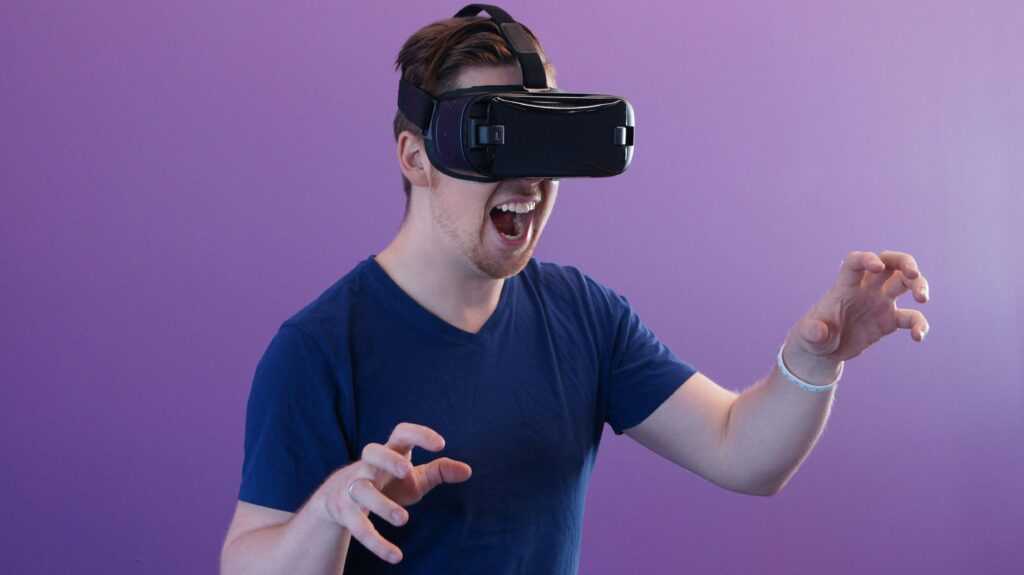Immersive experiences in virtual reality (VR) gaming have captivated players worldwide, but what happens when augmented reality (AR) elements are seamlessly woven into the mix?. As a passionate gamer and tech enthusiast, I’ve witnessed firsthand the exciting evolution of AR integration in VR gaming.
The blend of these cutting-edge technologies opens up a realm of possibilities, blurring the lines between the virtual and real worlds. In this article, I delve into the fascinating realm where AR meets VR gaming, exploring the synergies, challenges, and potential impact on the gaming landscape.
From enhancing gameplay mechanics to creating interactive environments, the fusion of AR elements into VR experiences is reshaping how we perceive and engage with digital entertainment. Join me on this journey as we unravel the future of gaming through the convergence of AR and VR technologies.
Overview of AR and VR Technologies
Exploring the landscape of augmented reality (AR) and virtual reality (VR) technologies opens up a realm of innovative possibilities. In AR, digital elements are superimposed onto the real world, enriching our environment with interactive overlays.
On the other hand, VR fully immerses users in a simulated environment, cutting them off from the physical world and transporting them to fantastical realms. The fusion of AR and VR technologies creates a dynamic synergy, blending the tangible aspects of reality with the boundless creativity of virtual worlds.
This integration revolutionizes gaming experiences, offering players a new dimension of immersive gameplay. By incorporating AR elements into VR gaming, developers can enhance user engagement, introduce interactive elements, and push the boundaries of traditional gameplay mechanics.
This amalgamation not only transforms how players interact with digital entertainment but also shapes the future of gaming as we know it. As we delve deeper into the convergence of AR and VR technologies, we unlock a world of endless possibilities that redefine the way we play and experience games.
The Benefits of Integrating AR Elements into VR Gaming
Being a blend of the physical and digital worlds, the integration of augmented reality (AR) elements into virtual reality (VR) gaming offers various advantages that significantly enhance the overall gaming experience.
Enhanced Immersion
By incorporating AR elements into VR gaming, I can experience a deeper level of immersion as the combination of real-world elements and virtual environments creates a more realistic and engaging gameplay experience. The seamless integration of AR overlays into VR worlds blurs the lines between what is real and what is virtual, allowing players to feel more connected to the game environment.
Increased Interactivity
Integrating AR elements into VR gaming not only enhances immersion but also boosts interactivity. I can interact with virtual objects and characters in a more intuitive and dynamic way, thanks to the incorporation of AR technology.
The ability to manipulate virtual elements within a real-world setting adds a new dimension to gameplay, making the overall gaming experience more interactive and engaging.
Challenges in Implementing AR Elements in VR Games
Implementing augmented reality (AR) elements in virtual reality (VR) games presents several challenges that game developers need to overcome to ensure a seamless and immersive gaming experience. As someone deeply entrenched in the world of gaming technology, I’ve encountered these obstacles firsthand and understand the complexities they entail. Let’s delve into the key challenges associated with integrating AR elements into VR games:
- Hardware Limitations: One of the foremost challenges in incorporating AR elements into VR games is the hardware constraints. While VR headsets are designed for full immersion in virtual environments, adding AR features may require additional hardware components such as cameras or sensors to enable real-world interactions. Balancing the requirements of both AR and VR hardware to deliver a unified experience can be a demanding task for developers.
- Spatial Mapping and Object Recognition: Achieving seamless integration of AR elements in VR games relies heavily on robust spatial mapping and object recognition capabilities. Ensuring that digital overlays accurately align with the physical environment requires sophisticated algorithms and precise calibration. Inaccuracies in spatial mapping can lead to disjointed experiences, impacting the overall immersion and gameplay quality.
- User Interface Complexity: Introducing AR elements into VR games introduces complexities in designing the user interface (UI) to accommodate both virtual and augmented elements seamlessly. Balancing the visual cues from AR overlays with the immersive VR environment without cluttering the user’s field of view necessitates innovative UI design solutions. Striking a balance between functionality and user experience is crucial to prevent overwhelming the player with information.
- Performance Optimization: The integration of AR elements can strain system performance, affecting the overall stability and fluidity of the VR game. Optimizing the game engine to render both VR environments and AR overlays in real-time requires efficient resource management and rendering techniques. Maintaining a consistent frame rate and minimizing latency are essential to prevent motion sickness and ensure a comfortable gaming experience.
- Content Synchronization: Synchronizing content between AR and VR elements poses a significant challenge for developers aiming to create cohesive gameplay experiences. Ensuring that interactions between virtual objects and AR overlays occur seamlessly and in real-time demands intricate synchronization algorithms. Delays or discrepancies in content synchronization can disrupt player immersion and hinder the overall gaming experience.
Navigating these challenges in implementing AR elements in VR games is crucial for developers seeking to push the boundaries of immersive gaming experiences. Overcoming these obstacles requires a deep understanding of both AR and VR technologies, coupled with innovative solutions to deliver compelling and seamless gameplay interactions.
As I continue to explore the dynamic landscape of AR and VR integration in gaming, addressing these challenges remains paramount to unlocking the full potential of mixed reality experiences.
Successful Examples of AR Integration in VR Gaming
Exploring successful examples of augmented reality (AR) integration in virtual reality (VR) gaming is crucial to understanding the practical application of merging these technologies. Here are some noteworthy instances where AR elements have been seamlessly incorporated into VR gaming experiences:
- Pokemon Go: In this immensely popular mobile game, players use AR technology to capture, train, and battle virtual creatures overlaid onto real-world environments through their smartphones. This integration of AR brings the beloved Pokemon universe into the real world, creating a captivating and interactive gaming experience.
- Minecraft Earth: This AR-enhanced version of the classic game allows players to build structures and explore creations in their physical surroundings using augmented reality. By blending VR elements with real-world interactions, Minecraft Earth provides a unique and immersive gameplay experience.
- Beat Saber: While primarily a VR rhythm game, Beat Saber offers an AR mode that enables players to project their gameplay onto real-world settings through mixed reality technology. This innovative feature enhances the visual appeal of the game and allows for creative content sharing among players.
- Ingress Prime: Developed by Niantic, the creators of Pokemon Go, Ingress Prime combines AR technology with location-based gameplay in a sci-fi universe. Players interact with virtual portals and engage in strategic battles overlaid on real-world maps, creating a dynamic and engaging multiplayer gaming experience.
- Star Wars: Jedi Challenges: This AR-powered game lets players immerse themselves in the Star Wars universe by engaging in lightsaber battles, strategic combat, and holochess matches projected into their physical surroundings. The integration of AR elements enhances the storytelling and interactivity of the gaming experience.
By examining these successful examples of AR integration in VR gaming, developers can glean insights into effective implementations and creative use cases. These instances showcase the potential of merging AR and VR technologies to create immersive and engaging gaming experiences that transcend traditional boundaries.



